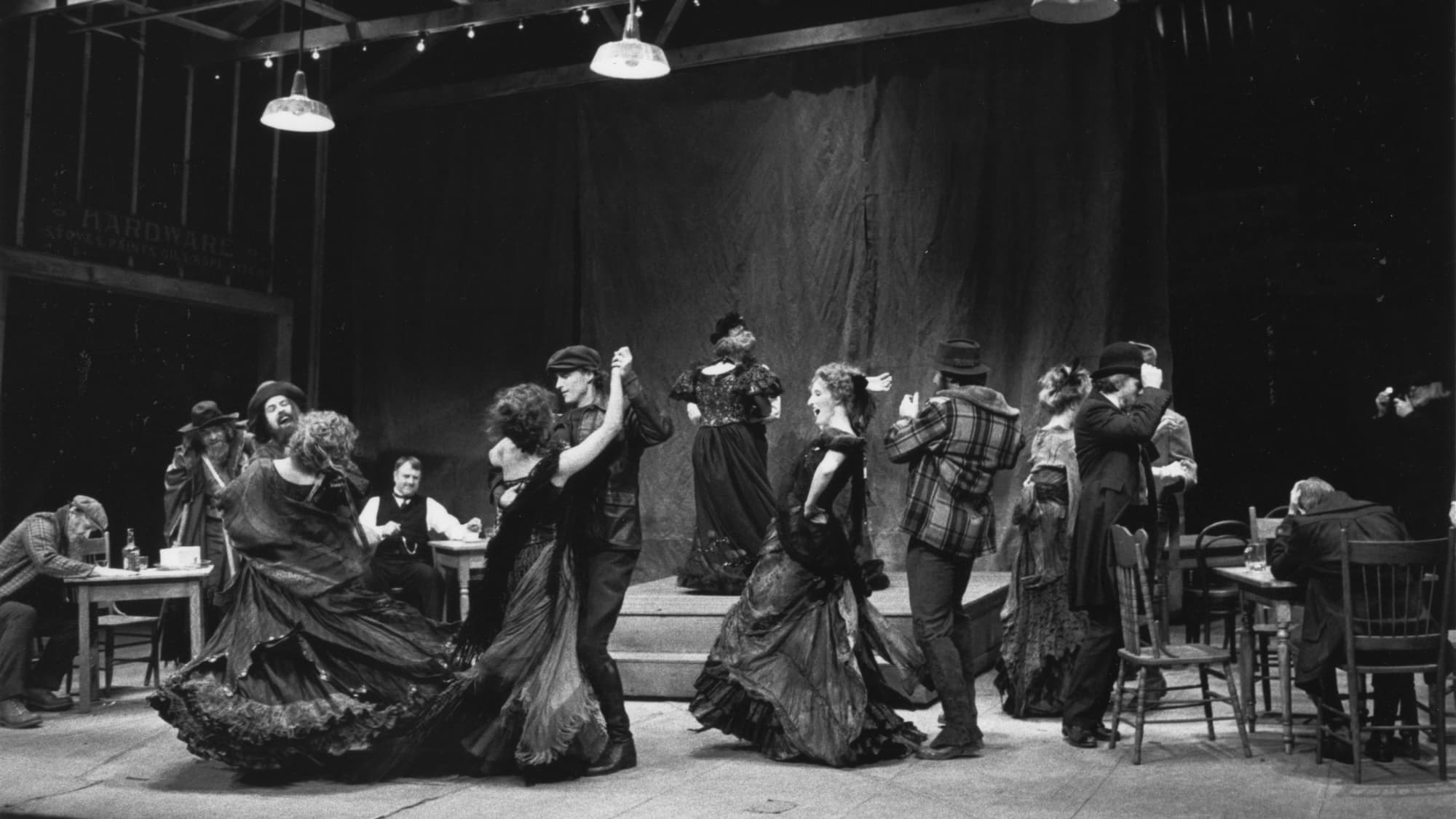
1973—1983
Building a Strong Foundation
After a decade of successful work, in the 1970s Seattle Rep turned its focus to sustaining what had been built. Theater leadership began to dream and plan for a new facility, launched education programs, and started formalizing a new approach to developing new work.
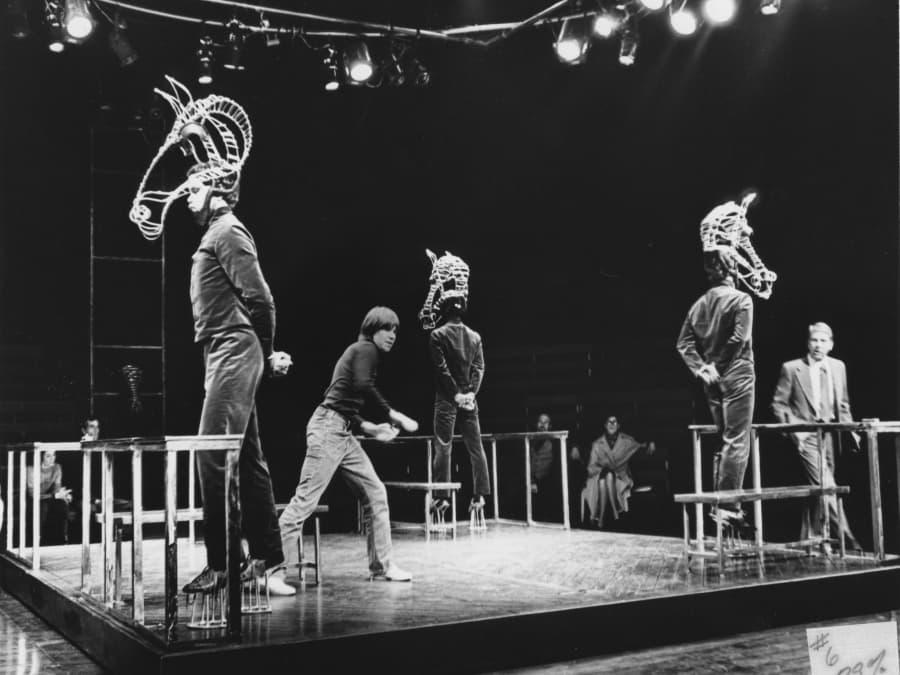
The First Acting Company is Formed
A repertory acting company took root, and audiences who attended Seattle Rep throughout the 1970s could expect to see many familiar faces in multiple productions within a season. The acting company roster included names like John Aylward, Jeanne Carson, Megan Cole, Clayton Corzatte, Ted D'Arms, Molly Dodd, Michael Keenan, Susan Ludlow, Biff McGuire, Eve Roberts, and Jean Smart.
Pictured: Equus by Peter Shaffer (1977).
W. Duncan Ross Appointed Artistic Director
W. Duncan Ross (or Bill Ross, as he was known to peers) brought a wide range of experience to his post. A talented theater manager, director, actor, teacher, and educational administrator, Ross was accomplished in staging classic works, though he was also well-known for his work in the avante-garde. During Ross's tenure, the theater produced a robust series of programming that embraced both guest artists and local talent.
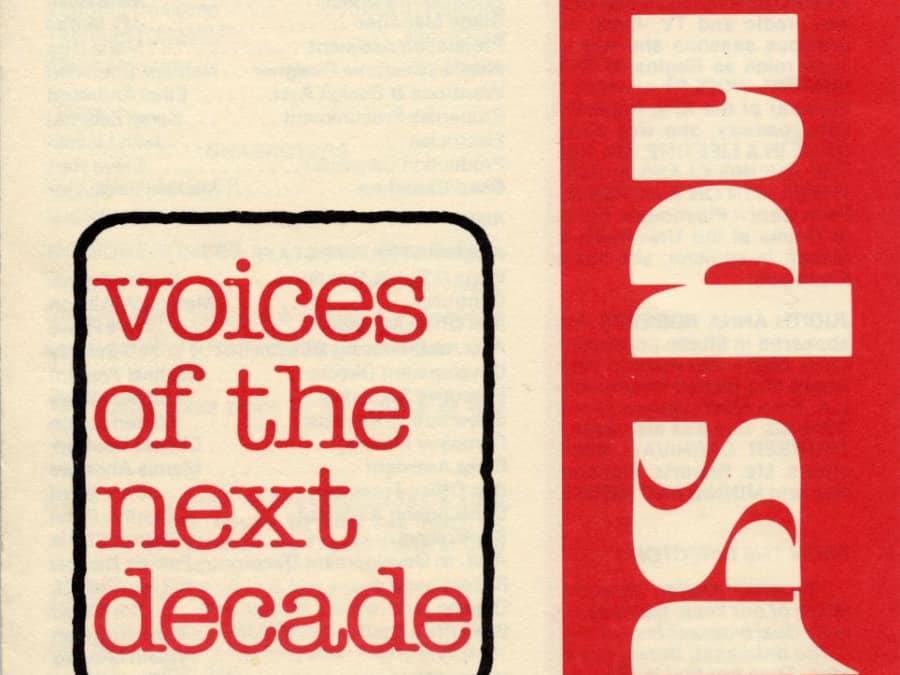
The Rep's 2nd Stage
Ross placed an emphasis on new work and insisted that "regional theaters had an obligation to provide a viable forum for the works of new playwrights, for innovative drama, and for challenging new concepts that keep American theater alive and well."
In 1974, Seattle Rep leased a historic building in downtown Seattle (the former Town and Country Club on 8th Avenue and Pike Street, site of today's Washington State Convention Center) and completely redesigned the interior for theatrical use. Over the next four years, Seattle Rep's 2nd Stage season introduced audiences to 16 new works from emerging playwrights, including Tom Stoppard, Joe Orton, Michael Ondaatje, Athol Fugard, and Leonard Melfi, among others.
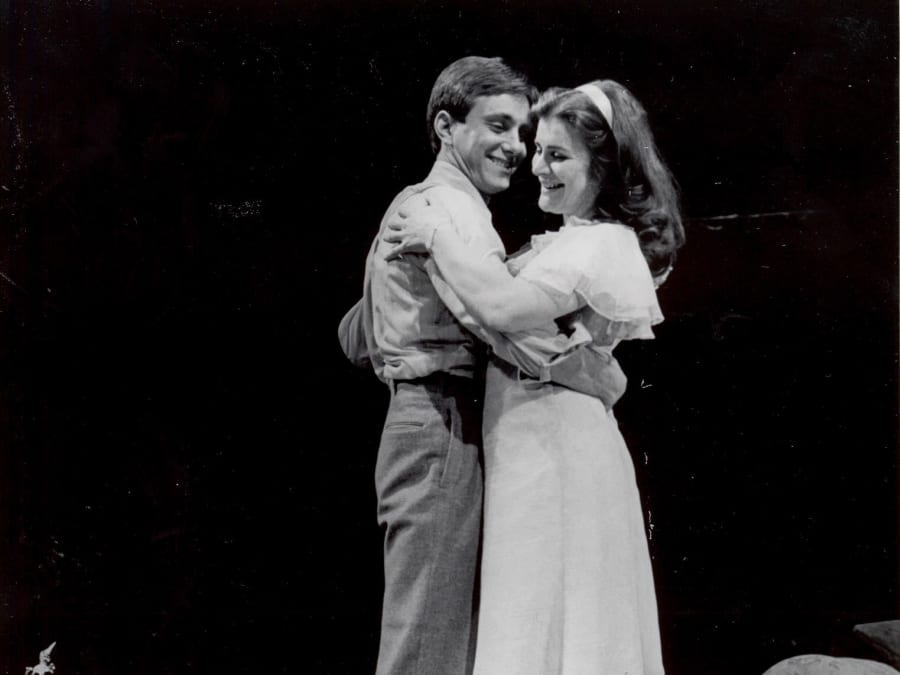
Taking the Show on the Road
From the very beginning, Seattle Rep leadership believed the immediacy of live theater didn't need to be confined to the Playhouse. Recognizing the need to provide audiences with deeper connections to theater arts, Seattle Rep initiated the "Hub City" touring concept in 1975. A major production would travel to a population center for a multi-day residency, during which lectures, workshops, and classroom visitations were conducted within a 60-mile radius of the hub city.
During the first year of hub city touring, the complete mainstage production of The Matchmaker toured Washington State. Successive years brought tours of Seven Keys to Baldpate, The Show-Off, Much Ado About Nothing, The Glass Menagerie (pictured, 1979), The Taming of the Shrew, and Born Yesterday to five western states.
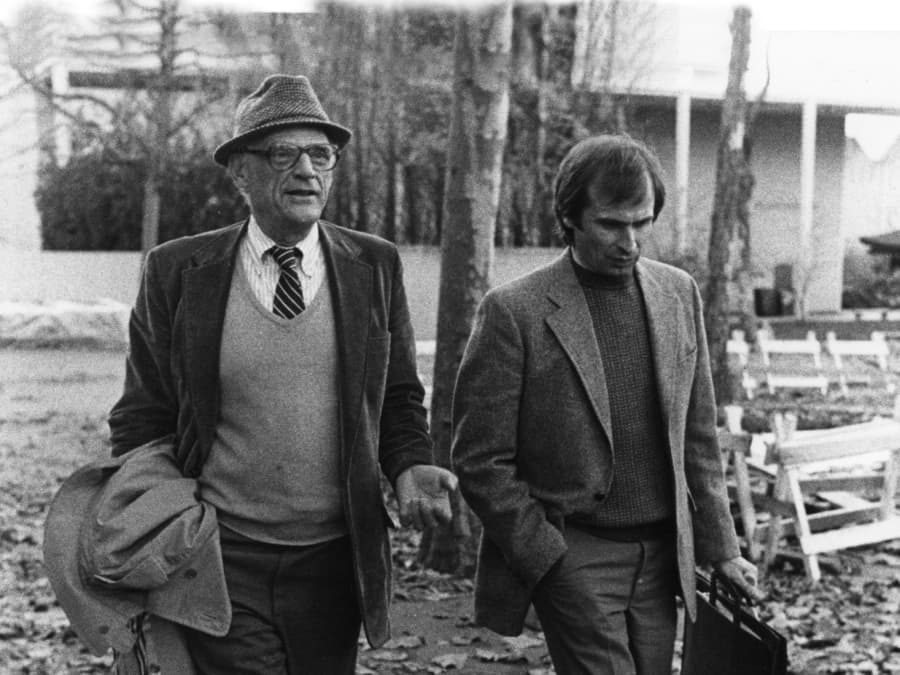
A New Works Program is Founded
In 1978, a special grant from arts funder PONCHO made possible a program dedicated to new works, now known as The Other Season. One of the many new works begun at Seattle Rep was a staged reading of Arthur Miller's The American Clock, directed by Daniel Sullivan.
Pictured: Playwright Arthur Miller and Daniel Sullivan prepping for The American Clock, 1979.
‘Our goal is to make Seattle a destination place for new plays.’
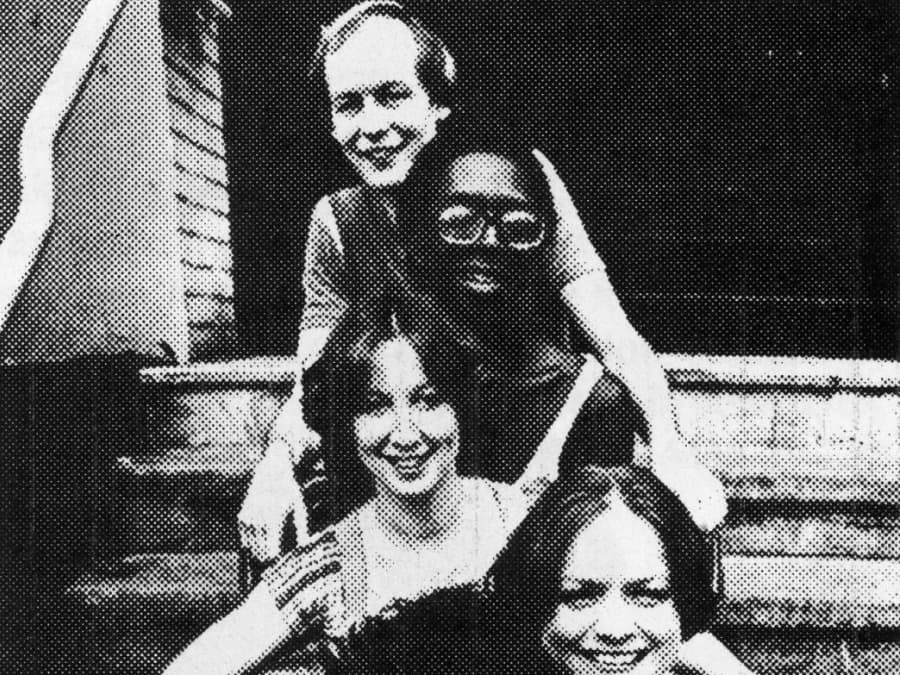
Meet the MOB
In 1979, a second touring company launched with a focus on education. The Mobile Outreach Bunch (MOB) brought specially-created shows to junior high and high school students throughout Washington State. MOB shows often featured young artistic talent and original productions. MOB tours during this time period included The Energy Show, Top of the Charts, Newcomer, and Everything Nice.
John Hirsch Appointed Consulting Artistic Director
A respected theater artist, John Hirsch had made a name for himself in Canada as a playwright and arts administrator, and followed up those experiences with strong directorial turns at New York's Lincoln Center, on Broadway, and at numerous regional theaters. Despite his short tenure at Seattle Rep, Hirsch left an impact. He pushed the theater's forays into more public programs, initiating the first post-play discussions and a "Sundays at Three" reading series.
As he reflected at the time of his departure: "I believe Seattle Rep is rapidly becoming what all real community regional theaters must be—a place which is not just one of entertainment, but where ideas are exchanged, visions are shared, and generally the audience is an actively participating member."
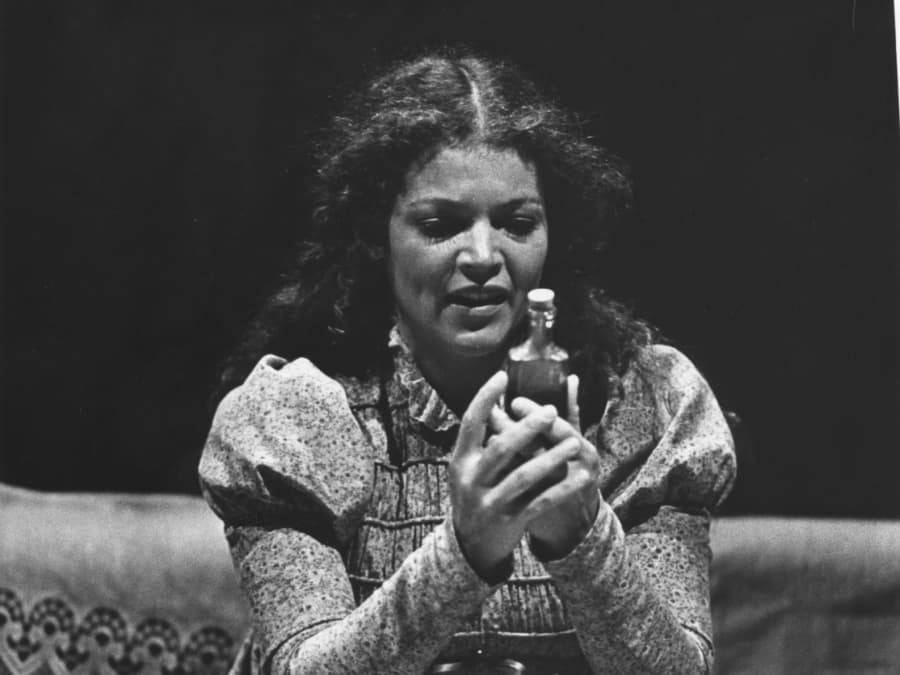
Daniel Sullivan Appointed Artistic Director
The cornerstone of Daniel Sullivan's artistic vision was a dedication to new work. Numerous discussion series began in relation to the art on stage, as well as a "Meet the Rep" program, which opened the theater's doors to the community.
Productions mounted during Daniel Sullivan's first two seasons as Artistic Director included The Front Page (1982), Major Barbara (1982), Another Part of the Forest (1981), The Vinegar Tree (1983), Romeo and Juliet (1982) (pictured: Amy Irving), Taking Steps (1983), and Translations (1983).
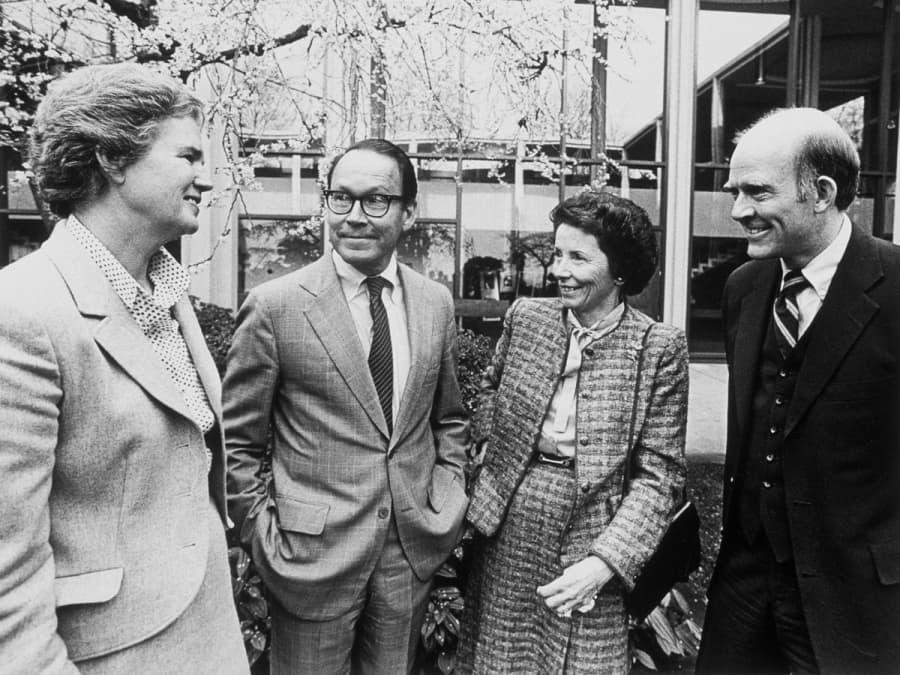
Building a New Home
The 1982/83 season was Seattle Rep's last in the Playhouse. The new theater officially opened in 1983, named for the person who was integral to Seattle Rep's founding and served as its first president—Bagley Wright.
Pictured: Four of Seattle Rep’s first Board Presidents and Chairs, Dorothy “Dottie” Simpson, Bagley Wright, Nancy Alvord, and Robert “Bob” Cline, outside of Seattle Rep's original home at the Seattle Playhouse. These founding advocates and supporters were essential members of the Seattle Rep family and driving forces behind the campaign to build and name the Bagley Wright Theater.
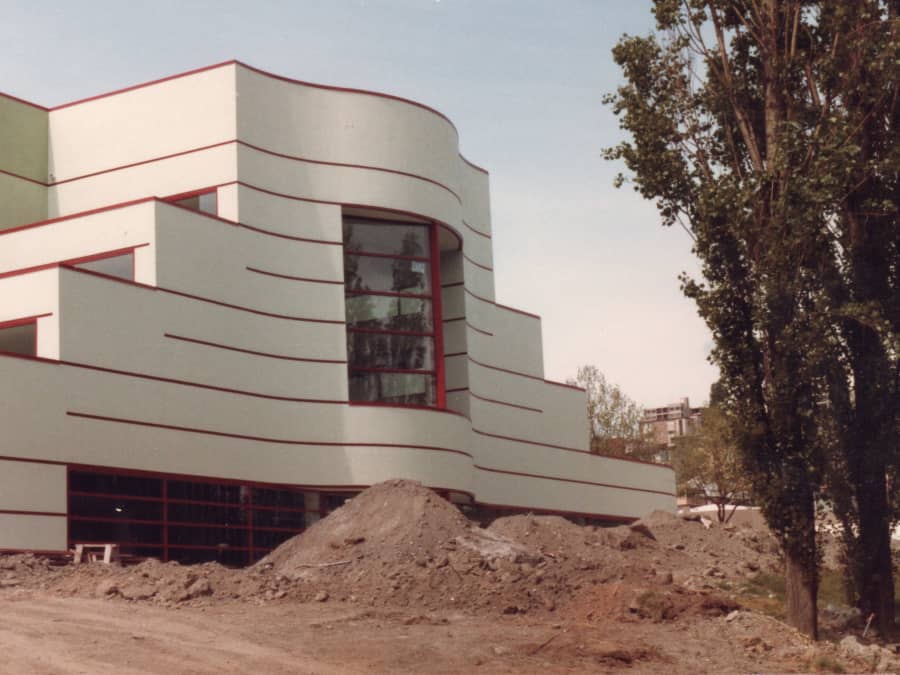
Completion of the Bagley Wright Theater
Upon completion, the new theater brought all of the company's operations under one roof: an 856-seat mainstage house, a large rehearsal room (the PONCHO Forum), dressing rooms, stage manager and crew rooms, costume and maintenance shops, administrative offices, storage, and a two-story-high scene shop.
